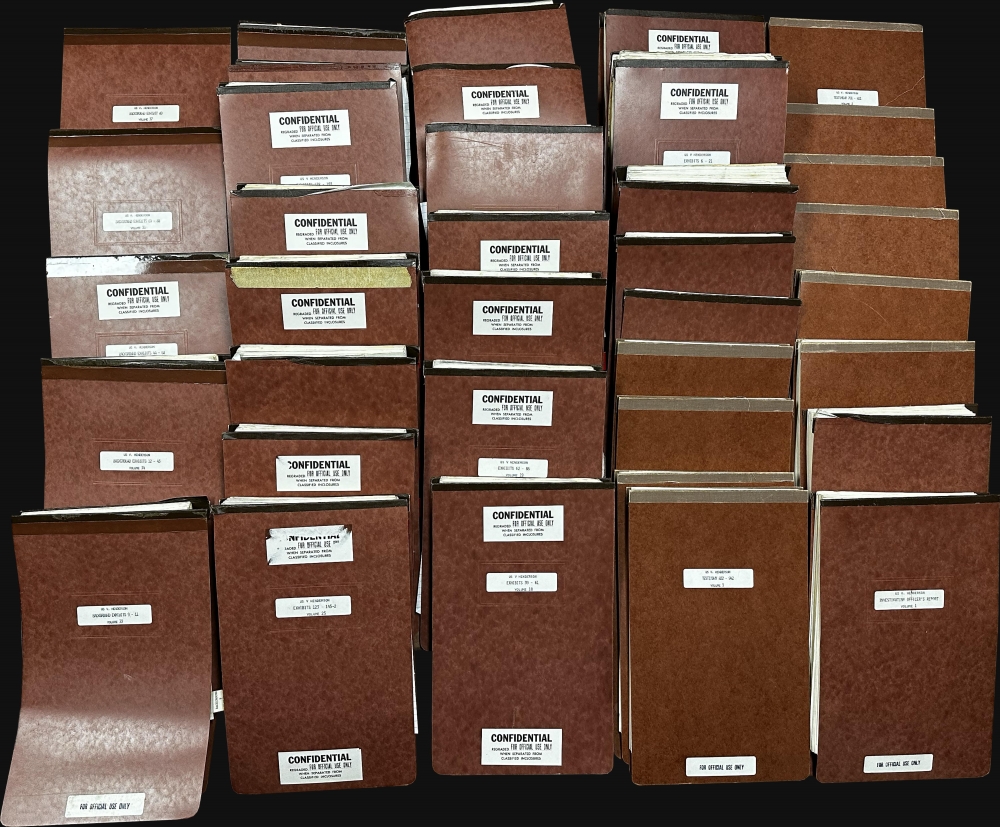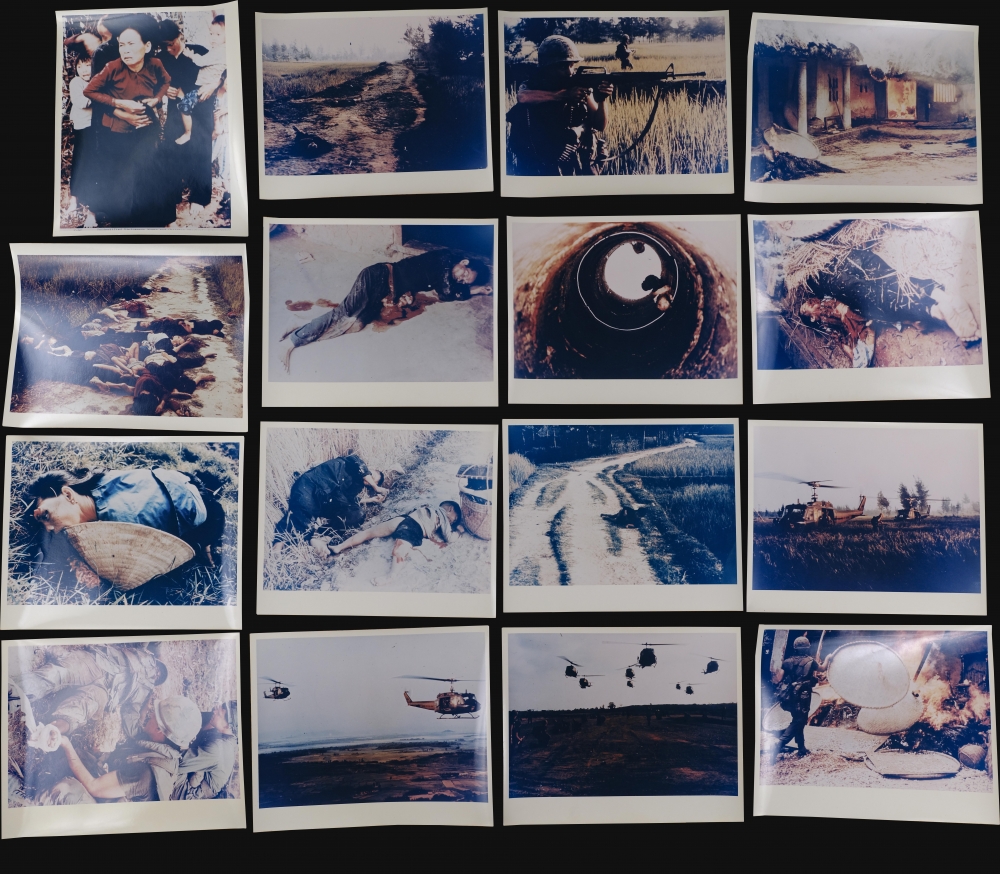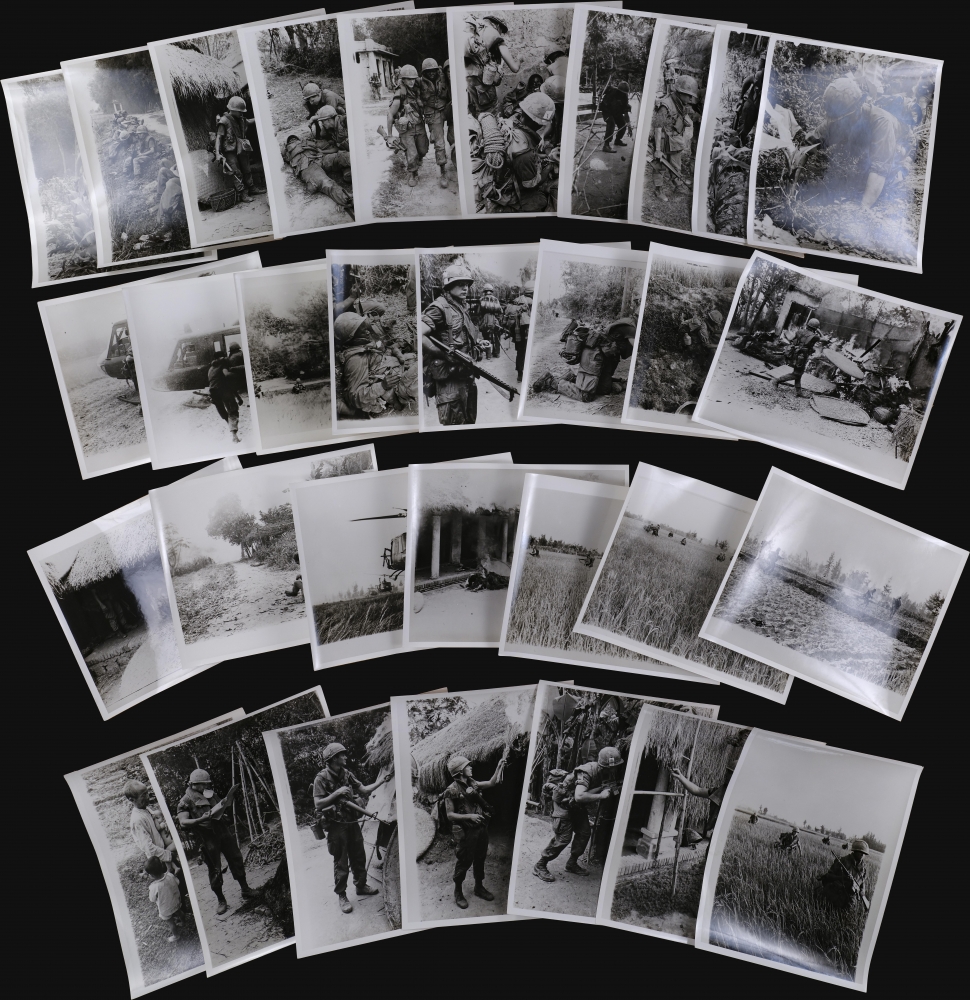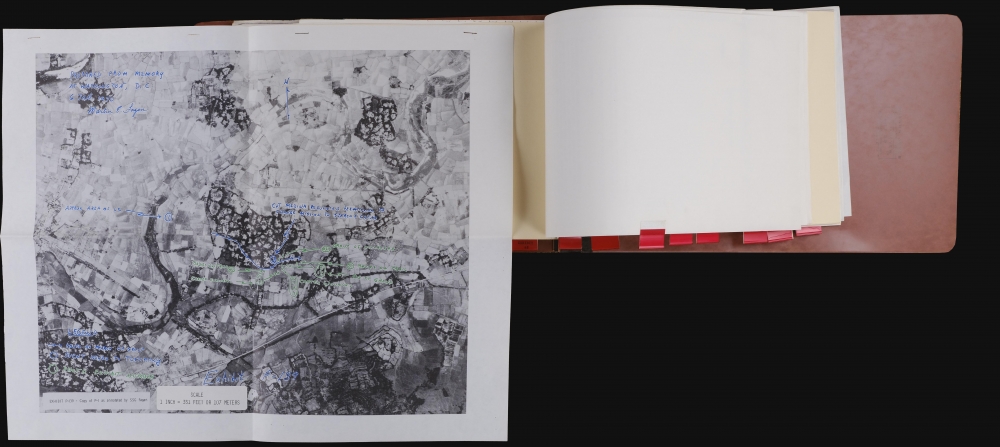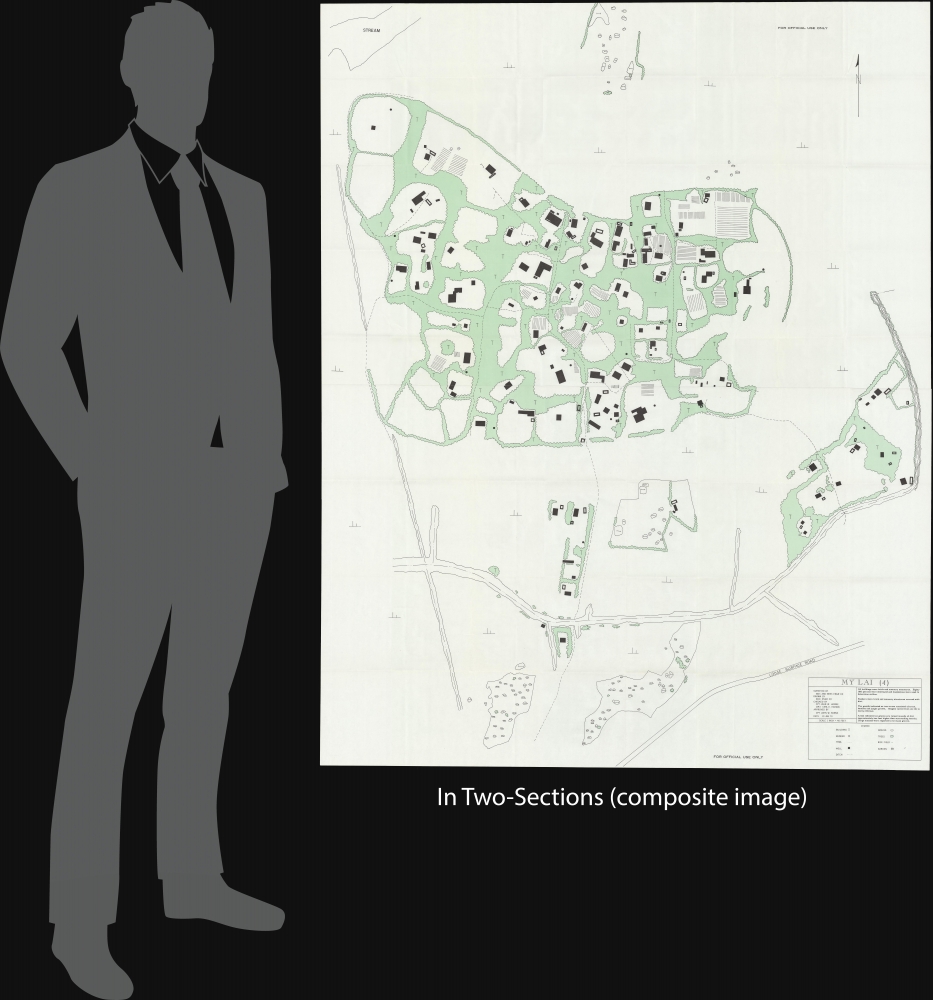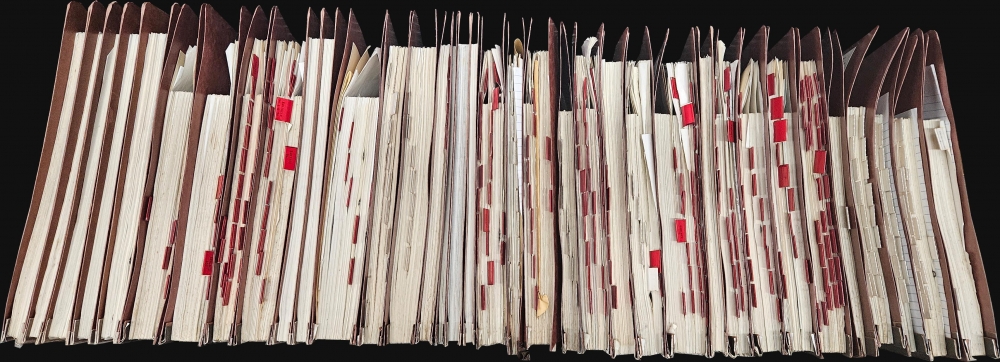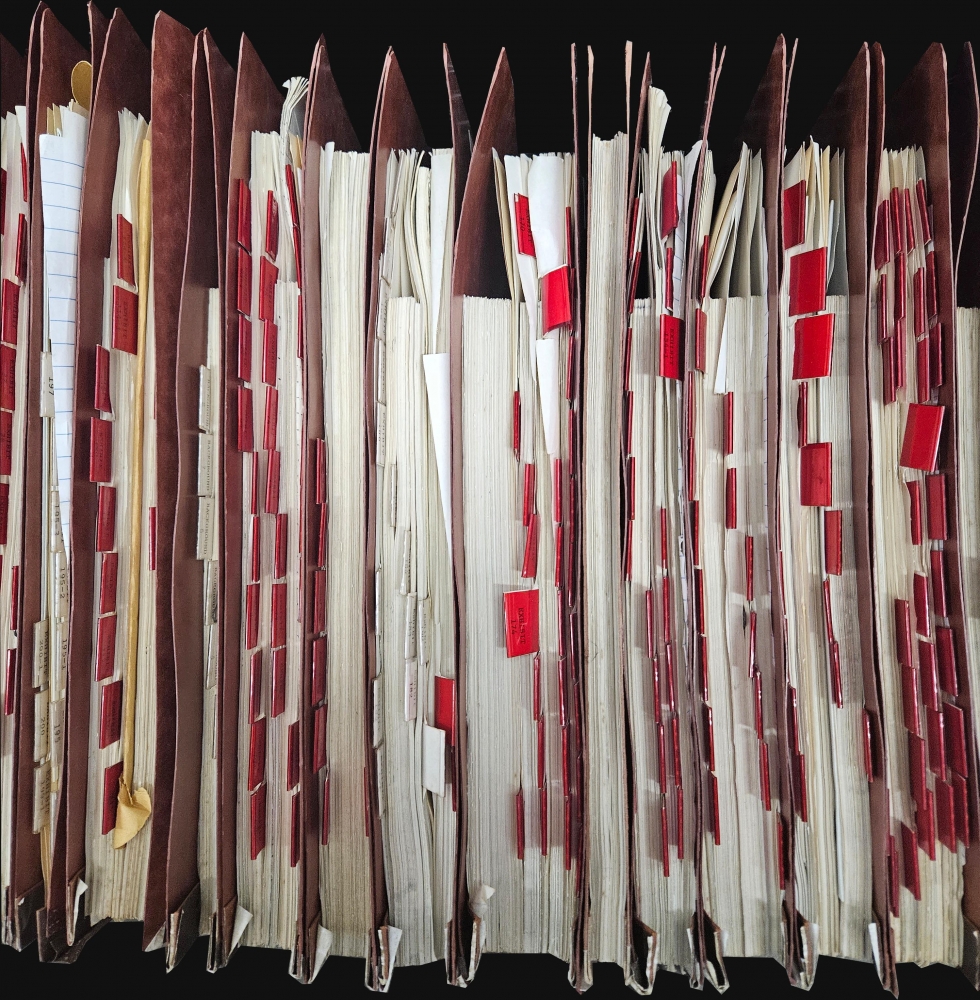1971 U.S. vs. Henderson Court Martial Archive - My Lai Massacre
MyLaiArchive-hunt-1971$250,000.00

Title
U.S. v. Henderson.
1971 (dated) 17 x 12 in (43.18 x 30.48 cm)
1971 (dated) 17 x 12 in (43.18 x 30.48 cm)
Description
This is a 37-volume archive of documents from the 1971 My Lai Massacre court-martial of Colonel Oran K. Henderson. Henderson was the highest-ranking officer tried in connection with My Lai, one of the most horrific events in American military history, and the last soldier to face a court-martial. The court-martial lasted 62 days and on December 17, 1971, Henderson was found not guilty. Henderson's court-martial ties for the longest court-martial in U.S. Army history with that of Lieutenant William Calley, the only member of the U.S. Army found guilty in connection with My Lai.
My Lai Massacre
The My Lai Massacre took place on March 16, 1968, during the Vietnam War. It is one of the most notorious events in U.S. military history. A unit of the American Army, Charlie Company led by Lt. William Calley, descended on the hamlet of My Lai in South Vietnam with the belief that it was harboring Viet Cong soldiers. Over the course of a few hours, American soldiers systematically killed and raped between 347 and 504 unarmed Vietnamese civilians, mostly women, children, and elderly. The event was initially covered up, but once exposed, it intensified anti-war sentiment in the United States and globally. Lt. Calley was the only one found guilty and was sentenced to life in prison, though his sentence was later reduced, and he served just three and a half years under house arrest.The Archive
Consisting of 37 volumes, the archive breaks down as follows- Investigating Officer's Report: Volumes 1 and 2 (410 pages)
- Testimony: Volumes 3 - 12 (1256 pages)
- Indexes: Volume 13 (39 pages)
- Exhibits 1 - 200-1: Volumes 14 - 31. (Includes maps, photographs, and thousands of pages of text)
- Background Exhibits: Volumes 32 - 37
A Closer Look at the Exhibits
Some of the exhibits are visually quite astounding. Exhibit 195, for example, is a large two-sheet wall map of My Lai (4) that marks buildings, roads, and other locations within the hamlet. Over a dozen folding aerial photographs bearing notations appear throughout and trace the events of March 16 as a visual representation of some of the witnesses' testimony. Exhibit 179 is Volume 1 of the Report of the Department of the Army Review of the Preliminary Investigations.Photographs
Four exhibits (7, 9, 18, and 94) are photographs, both color and black and white. Exhibit 7 is 47 color and black and white photographs of the massacre, taken by Specialist Ronald L. Haeberle, of the 11th Brigade Public Information Detachment, who was at My Lai that day because command had said that Public Information soldiers should be at all major operations. Haeberle volunteered to go on the mission and took three cameras with him. Two Army cameras loaded with black and white film and one personal camera, loaded with his own color film. Haeberle developed the color film one month after getting out of the Army. He testified that the photographs in Exhibit 7 'are a fair and accurate representation of what he saw on 16 March 1968' (Volume 4 Page 295). Exhibits 63 and 64 are aerial photographs marking where these photographs were taken. Photocopies of Ronald Haeberle's black and white contact sheets (Exhibits 65 and 66) are included. Exhibit 9 is one color photograph of the massacre. Other photographs that may not have been taken by Haeberle are included as well. Among these are Exhibit 18, a photograph of two soldiers, and Exhibit 94, two photographs taken from a helicopter, showing My Lai burning.The Charges Against Colonel Oran K. Henderson
After an investigation, on February 26, 1971, the Army announced that Colonel Henderson faced formal charges and a court-martial. Per the Investigating Officer's Report included in this archive:The accused, Colonel Oran K. Henderson…is charged with one specification of dereliction of duty in that he willfully failed to conduct a thorough and proper investigation of allegations or reports of excessive killing of noncombatants, and a confrontation between a helicopter pilot and ground forces; and one specification of failing to obey a lawful general regulation, MACV Directive 20-4, dated 27 April 1967, in that he did not report to his Commanding Officer incident and acts thought or alleged to be war crimes, the intentional infliction of death or injury upon noncombatant Vietnamese civilians both in violation of Article 92, Uniform Code of Military Justice. The accused is further charged with two specifications of giving false official statements, with intent to deceive, before the Peers Inquiry in that he stated that he had requested Major Gibson to conduct a survey of his pilots and that Major Gibson made a report that none of his pilots had observed anything, and that Lieutenant Colonel Luper had investigated whether artillery landed on the village, both in violation of Article 107, Uniform Code of Military Justice. Finally, he is charged with one specification of making false statements under oath with knowledge of their falsity before the Peers Inquiry, to the effect that he was positive that he had not talked to Warrant Officer Culverhouse or Specialist Colburn on or about 18 March 1968, in violation of Article 134, Uniform Code of Military Justice (Exhibit 1). (Volume 1, pgs. 1-2)General Ira Hunt, the Investigating Officer and from whose estate we obtained these documents, wrote in his Report:
Colonel Henderson as Brigade Commander was in a pivotal position in the chain of command. He was the interface between both Major General Koster, Commanding General of the Americal Division who had the responsibility for initiating the field investigations and between Lieutenant Colonel Barker, deceased, Commanding Officer of Task Force Barker, and Captain Medina, Commanding Officer of C/1-20 Inf who were the key operating commanders. Because of his unique position in the chain of command it has been necessary to hear testimony for almost the total cross section of personnel involved in the My Lai (4) operations and subsequent investigations to determine relevant material and to insure a thorough and impartial investigation.' (Volume 1, pg. 3)
Oran K. Henderson
Colonel Oran K. Henderson (August 25, 1920 - June 2, 1998) was a highly decorated American army officer who fought in World War II, Korea, and Vietnam. May 16, 1968, the day of the My Lai Massacre, was Henderson's first day in command of the 11th Brigade. After being acquitted of the charges in the court-martial, Henderson remained in the Army as commandant of the Indiantown Gap Military Reservation. He retired in 1974, when he told the Associated Press that his retirement 'was mandatory since he had been colonel for five years without promotion'. He was appointed Pennsylvania's director of civil defense after his retirement from the Army.Provenance: Major General Ira A. Hunt
This archive was part of the papers of Major General Ira Augustus Hunt Jr. (1924 - 2022), an American Army officer, historian, and author. Hunt was the Investigating Officer for the U.S. v. Henderson court-martial. Born in Lincoln, Nebraska, Hunt entered the United States Military Academy at West Point, graduating in 1945, at which point he became a second lieutenant in the Corps of Engineers. He was sent overseas, where he served in several post-war engineer assignments in Europe. A distinguished military and academic career followed, including multiple prestigious degrees, as well as service in Korea. During the Vietnam War (1955 - 1975), he served as Chief of Staff of the 9th Infantry Division and as Commanding Officer of its 1st Brigade. After Vietnam, he was made Assistant Commandant of the Engineer School at Fort Belvoir, then Deputy Chief of Staff for Training and Schools at Headquarters TRADOC, Fort Monroe, Virginia. He retired in 1978, after which he wrote three books: The 9th Infantry Division in Vietnam: Unparalleled and Unequaled, Losing Vietnam: How America Abandoned Southeast Asia, and My Lai Cover-Up: Deceit and Incompetence.Condition
Very good. 37 volumes that measure 43 linear inches, or 3.58 linear feet. Volumes are not uniform thickness. Some volumes have front cover removed or wear to binding. Includes color and black and white photographs, folded maps and aerial photographs, and thousands of pages of text.

